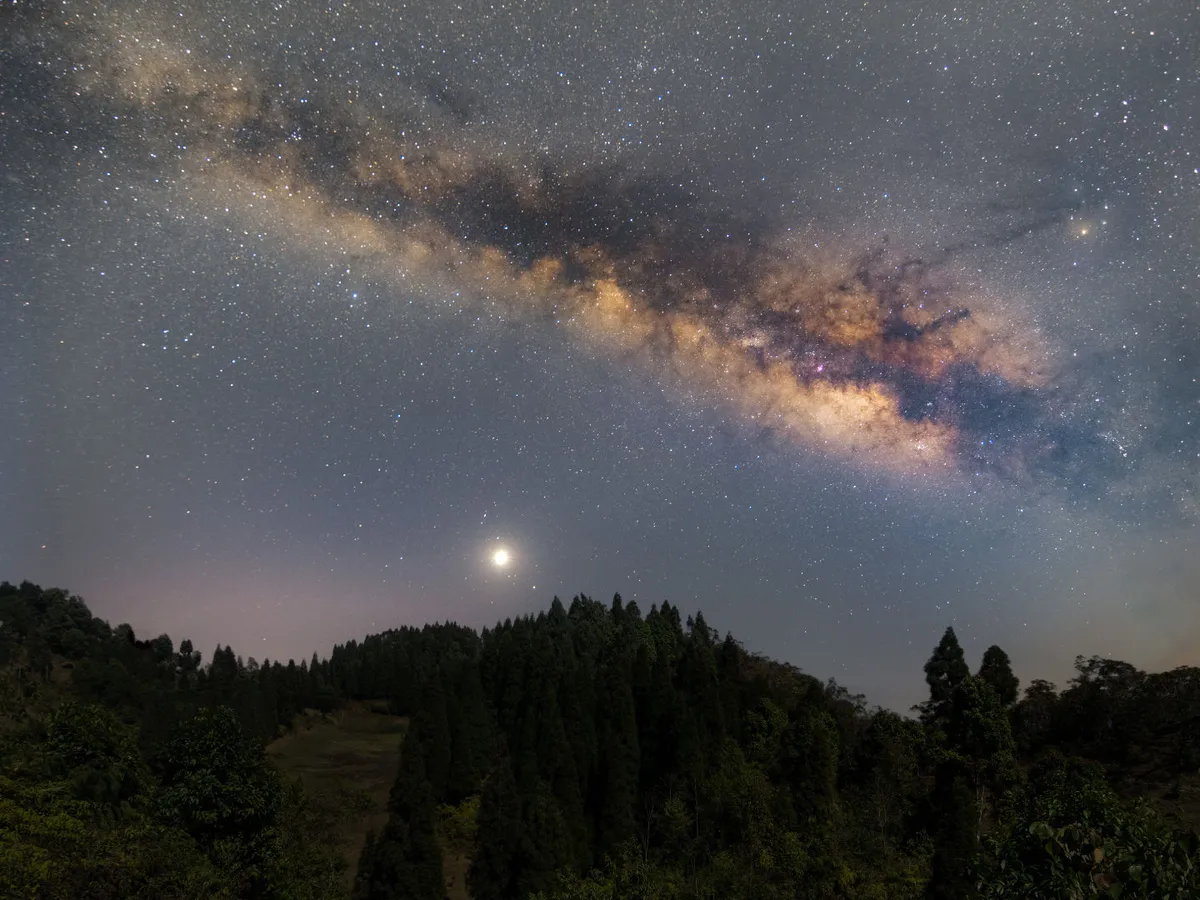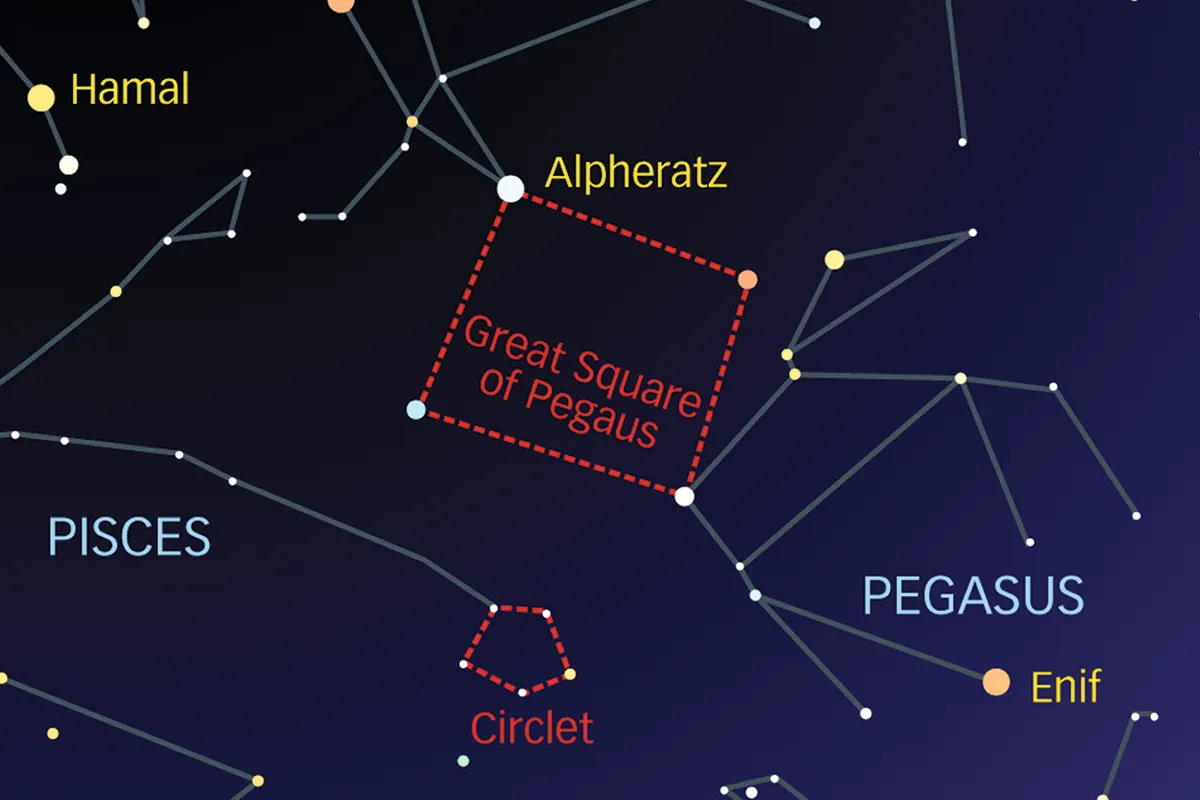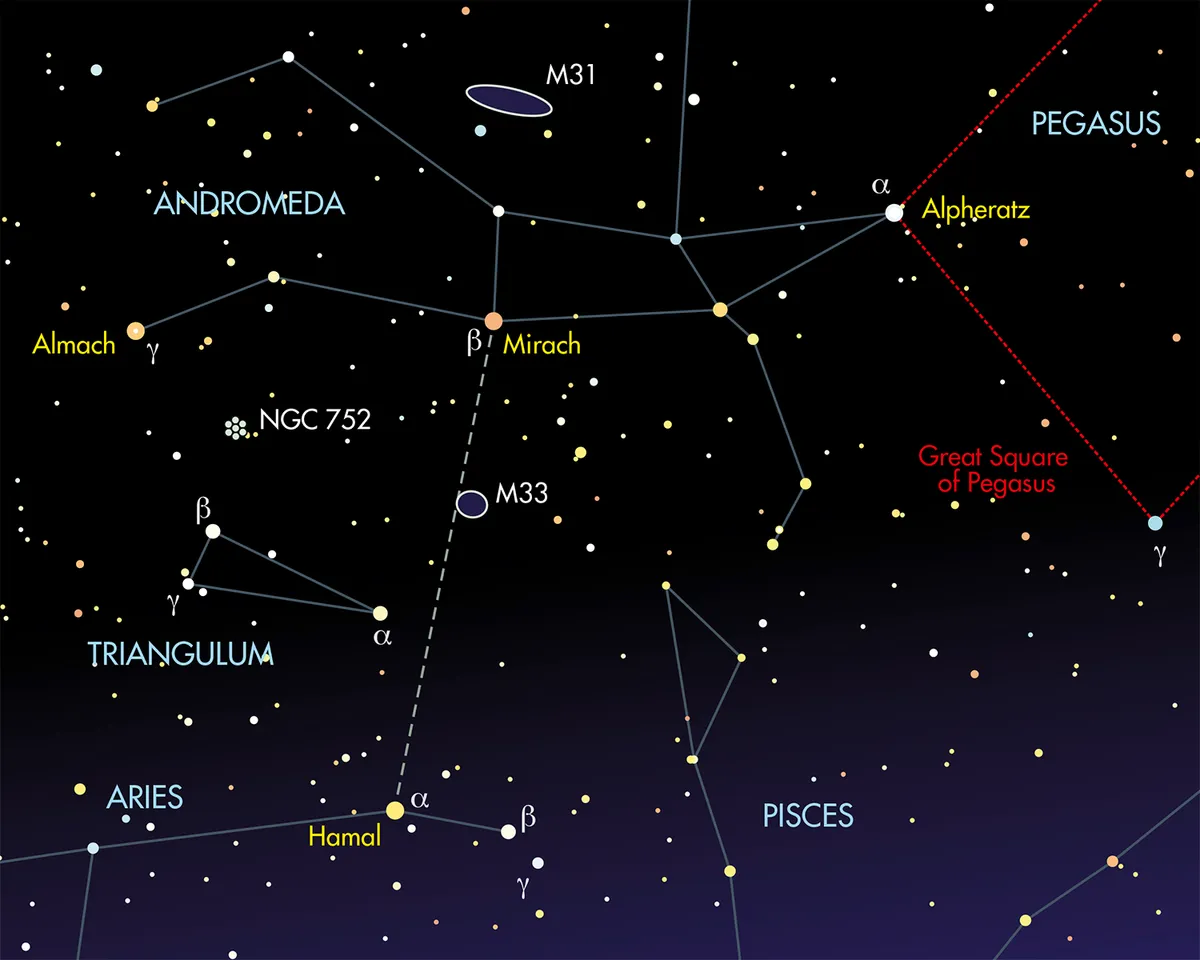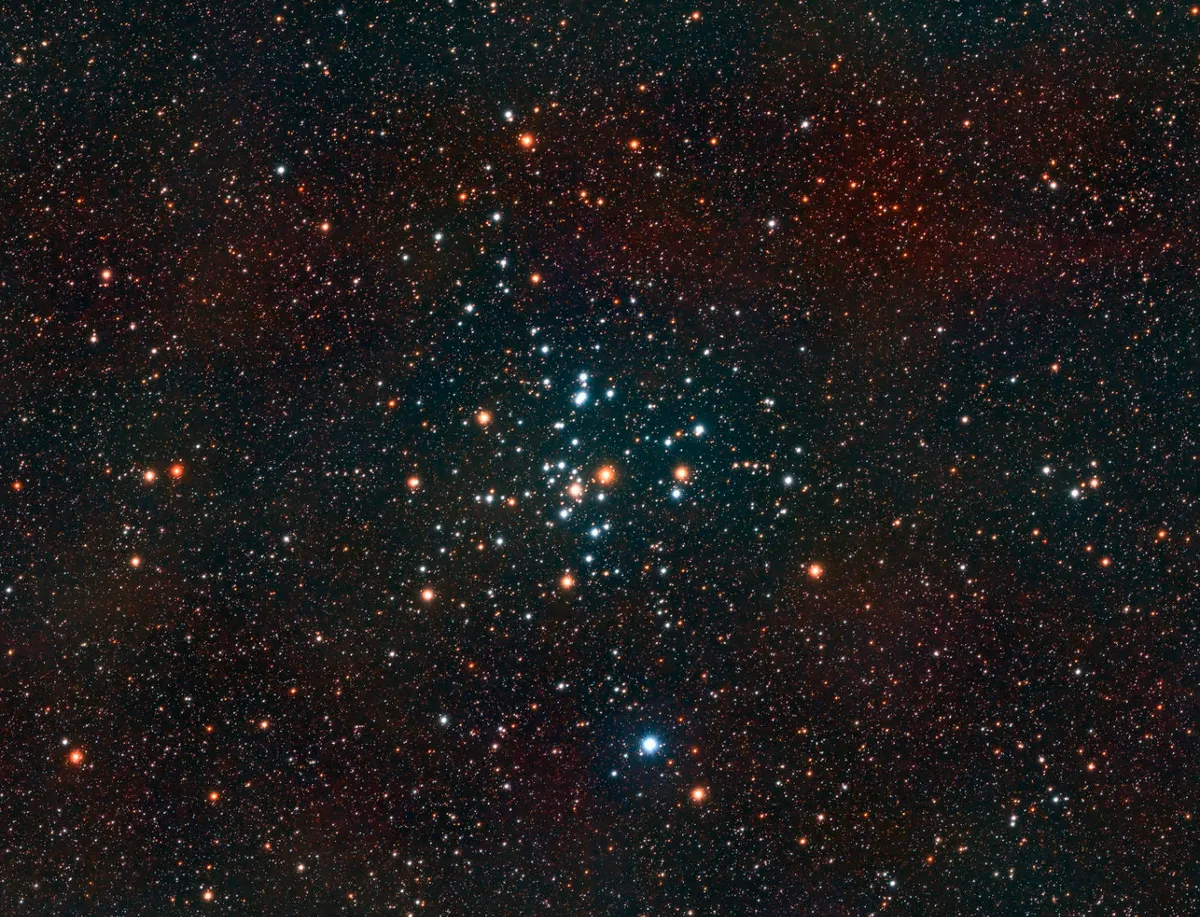In this guide we'll reveal what you can see in the night sky tonight, and throughout the month.
Those of us who enjoy stargazing and observing the night sky can't always plan when and where we're going to get the chance to gaze upwards.
Busy schedules, light pollution, the weather: sometimes finding even just 30 minutes to stand and stare up at a clear, dark night sky and take in the planets, stars and constellations can be a feat in itself.
So when you do find the time, you'll need to know what's visible in the night sky tonight, and the best things to look out for when stargazing.
Complete newcomer? Read our guides to the best telescopes for beginners and astronomy for beginners.

Here's our stargazing guide to what you can see in the night sky tonight.
Our guide is centred around what's visible from the UK, but all northern hemisphere observers should be able to use it, with the odd adjustment to stated times.
In our guide, we use Universal Time (UT) and British Summer Time (BST). UT is the standard time used by astronomers around the world. BST is one hour ahead of UT
We also use RA (Right ascension)and dec. (declination).
These coordinates are the night sky’s equivalent of longitude and latitude, describing where an object is on the celestial ‘globe’.
For help with these, read our guide to celestial coordinates.
For more advice, read our guide on how to stargaze or sign up to receive the BBC Sky at Night Magazine e-newsletter for weekly tips delivered directly to your email inbox.
If you're south of the equator, find out what you can see in the Southern Hemisphere night sky tonight.

What's in the night sky tonight?
October astronomy highlights
- 2 October: Dwarf planet Ceres at opposition (evening)
- 6 October: Titan and its shadow transit Saturn (from 02:25 BST (01:25 UT))
- 7 October: Harvest Moon for 2025
- 21 October: Orionid meteor shower peak
- 26 October: End of British Summer Time, clocks go back an hour
- 29 October: Titan occulted by Saturn (20:38 UT)
This year is the year of moon phenomena with our own Moon and the major moons of Jupiter and Saturn putting on some infrequently seen events.
Harvest Moon and supermoon

The full Moon on 7 October is the closest to the September equinox on 22 September, making it the Harvest Moon for 2025.
It’s also a supermoon, or perigee full Moon (lunar perigee when the Moon is closest to Earth, occurring on 8 October).
The Harvest Moon’s orbital geometry relative to Earth minimises the difference between rise times for the fuller phases.
Sounding more complex than it is, this is best illustrated by example.
Moonrise for the 97%-lit waxing gibbous Moon on 5 October is 18:03 BST (17:03 UT).
On 6 October when virtually full, it rises just 10 minutes later at 18:13 BST (17:13 UT), and then just after full Moon on the evening of 7 October rises 12 minutes later at 18:25 BST (17:25 UT).
The bright Moons, which are above the horizon at roughly similar times over several evenings, are perfect for harvest collection.
The average rise time difference throughout the year is 50 minutes.

Solar System moons
Earth's Moon isn't the only moon worth your attention this month!
Jupiter’s outer Galilean moon Callisto transits the planet on 2 October between 07:48-11:38 BST (06:48-10:38 UT) under daylight conditions.
A better-timed opportunity occurs on 19 October between 02:01-06:01 BST (01:01-05:01 UT).
Saturn’s largest moon Titan transits Saturn on the morning of 6 October (02:25-07:44 BST (01:25-06:44 UT)) followed by its shadow (04:51-08:30 BST (03:51-07:30 UT)).
On the evening of 13 October Titan is occulted by Saturn at 23:56 BST (22:56 UT).
Another Titan and shadow transit occurs on the night of 21 October starting at 23:44 BST (22:44 UT), another Titan occultation starts at 20:38 UT on 29 October.
Orionid meteor shower

The Orionid meteor shower peaks at noon on 21 October, so optimal viewing nights are on 20/21 and 21/22 October.
The shower produces a peak zenithal hourly rate (ZHR) of 25 meteors per hour, although what you'll actually see will be lower.
Conditions are favourable this year with a new Moon on 21 October.
Stars and constellations

A new Moon is ideal for viewing stars and constellations. Early evening in the autumn, the most prominent shape is the large, but not bright, Great Square of Pegasus.
South of the Square lies the even fainter stars of the Circlet asterism, representing the western fish of Pisces, the Fish.
Saturn and Neptune are currently both located just southeast of the Circlet.

Southwest of the Circlet is the large sprawling constellation of Aquarius, the Water Bearer, its most distinguishing feature being the three-pronged Water Jar asterism, also known as the Steering Wheel.
Follow the line of the western edge of the Great Square of Pegasus south and eventually you’ll arrive at the most southerly first magnitude star visible from the UK, Fomalhaut (Alpha (α) Piscis Austrinus).
The northeast corner of the Great Square is marked by Alpheratz (Alpha (α) Andromedae) the primary star of Andromeda, the Chained Princess.
The main form of this constellation appears like a large wedge spreading northeast from Alpheratz.
Located half-way along the northern edge of the wedge is the Andromeda Galaxy M13, the farthest object visible with the naked eye from a typical back garden location, lying at a distance of 2.5 million lightyears.

Night sky in October 2025, night-by-night
Thursday 2 October
Dwarf planet Ceres reaches opposition in the constellation of Cetus, shining at mag. +7.6.
Friday 3 October
Tonight and the night of 17/18 October are good times to look for the half-submerged crater Prinz on the Moon.
Monday 6 October
Between 02:18 BST (01:18 UT) and 05:51 BST (04:51 UT) when Saturn sets, its largest moon Titan is in transit across the planet’s disc.
Tuesday 7 October
This morning’s full Moon is the closest to the Northern Hemisphere’s autumn equinox, making it 2025’s Harvest Moon.
It’s also a perigee full Moon, when the Moon is closest to Earth in its orbit. This occurs at 13:36 BST (12:36 UT) on 8 October.
Wednesday 8 October
The Harvest Moon and its subsequent gibbous incarnations exhibit the smallest differences in rise times for the year. Yesterday’s full Moon rose at 18:25 BST (17:25 UT); today, moonrise is just 15 minutes later at 18:40 BST (17:40 UT).

Thursday 9 October
If you’re quick, you can catch mag. +12.0 comet C/2024 E1 Wierzchoś when it’s 0.5° from mag. +3.7 Gamma (γ) Herculis this evening. The Moon will be rising though, so try to grab a view as soon as the sky darkens.
Friday 10 October
The Moon occults part of the Pleiades open cluster this morning, though the event is truncated by the onset of dawn twilight.
Today is the peak of the (low-rate) Southern Taurid meteor shower.
Monday 13 October
Jupiter appears close to this evening’s 47%-lit waning crescent Moon.
Titan is occulted by Saturn at 23:54 BST (22:54 UT).
Tuesday 14 October
A 36%-lit waning crescent Moon rises around midnight and lies 1.2° north of the centre of M44, the Beehive Cluster.
Wednesday 15 October
As the Moon clears out of the way, now is a good time to get out your telescope and explore some deep-sky objects.

Thursday 16 October
Even in October, it’s still possible to see the brightest part of the Milky Way visible from the UK – the part that runs through Cygnus. With the Moon out of the way, the skies are nice and dark now too.
Sunday 19 October
A tricky conjunction occurs between mag. +1.5 Mars and mag. –0.1 Mercury this evening, with the planets separated by 2° very low above the southwest horizon shortly after sunset.
Be sure the Sun has set before searching with binoculars.
Tuesday 21 October
Peak of the Orionid meteor shower. It should be a good show.
Titan transits Saturn from 23:41 BST (22:41 UT).
Wednesday 22 October
Comet C/2025 A6 (Lemmon) is easy to find this evening, located 1.3° from the mag. +2.5 double star Izar (Epsilon (ε) Boötis). Catch this mag. +10.3 comet as soon as the sky darkens after sunset.

Sunday 26 October
The UK’s period of daylight savings comes to an end today. At 02:00 BST this morning, the clock reverts to 01:00 UT.
Wednesday 29 October
Saturn’s largest moon Titan is occulted by the planet at 20:38 UT.
Mercury reaches greatest eastern elongation, separated from the Sun by 23.9°. It sets just after the Sun.
Thursday 30 October
At around 22:30 UT tonight (depending on your exact location), the 62%-lit waxing gibbous Moon will occult mag. +3.7 Nashira (Gamma (γ) Capricorni).
Share your observations and images with us, or send us your astronomy questions to contactus@skyatnightmagazine.com
